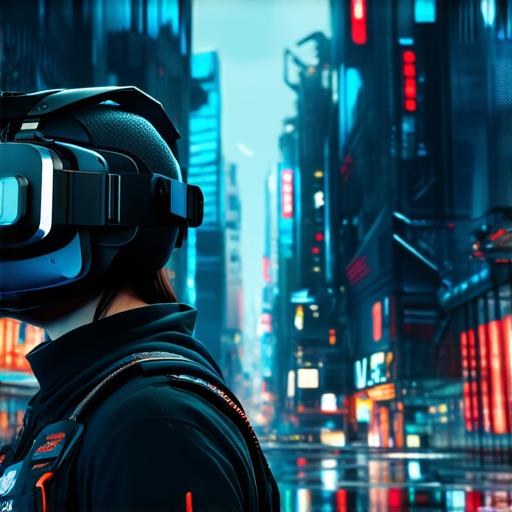Introduction: The Rise of Virtual Reality
Virtual reality technology has been around for decades, but it wasn’t until the 2010s that it started to gain widespread adoption. With advancements in hardware, software, and displays, VR has become more immersive, affordable, and accessible than ever before. Today, there are countless applications of VR across various industries, including gaming, education, healthcare, and entertainment.
Case Study: The Impact of Virtual Reality on Gaming
Gaming has been one of the first industries to embrace virtual reality technology. With VR headsets like the Oculus Rift and HTC Vive, gamers can now experience immersive, 360-degree gameplay like never before. Games like “Beat Saber” and “Job Simulator” have become wildly popular in VR, and the technology has even led to new genres of games, such as social VR and educational games.
Case Study: The Impact of Virtual Reality on Education
Virtual reality technology is also being used in education to enhance learning experiences. With VR, students can take virtual field trips to historical sites or explore the human body in a 3D environment. This has led to improved engagement and retention of information, as well as new opportunities for collaboration and problem-solving.

The Future of Virtual Reality: Predictions and Trends
Virtual reality technology is constantly evolving, and it’s hard to predict exactly what the future holds. However, there are several trends and predictions that suggest VR will continue to play a major role in our lives.
One trend is the integration of augmented reality (AR) into virtual reality experiences. AR allows users to overlay digital content onto the real world, creating a seamless blend of virtual and physical elements. This has already been seen in games like “Pokémon Go,” but it has the potential to be used in a variety of other industries, including retail, marketing, and entertainment.
Another trend is the development of more affordable and accessible VR technology. As costs decrease and hardware improves, virtual reality will become more accessible to people around the world, allowing for even greater adoption and innovation.
Finally, there are predictions that VR will continue to disrupt traditional industries, leading to new business models and opportunities. For example, virtual real estate could become a major industry in the coming years, as people increasingly use VR to buy and sell properties online.
Conclusion: The Potential of Virtual Reality
Virtual reality technology has already shown great potential across various industries, and it’s hard to imagine that it won’t continue to dominate the world in the years to come. From gaming to education and healthcare, VR has the power to transform the way we interact with digital content and change our lives forever. As the technology continues to evolve and become more accessible, the possibilities are endless.
FAQs:
Q: What is virtual reality (VR)?
A: Virtual reality is an immersive computer-generated simulation of a 3D environment that can be interacted with in real time using specialized headsets or displays.
Q: What industries is virtual reality used in?
A: Virtual reality is used in a variety of industries, including gaming, education, healthcare, entertainment, and more.
